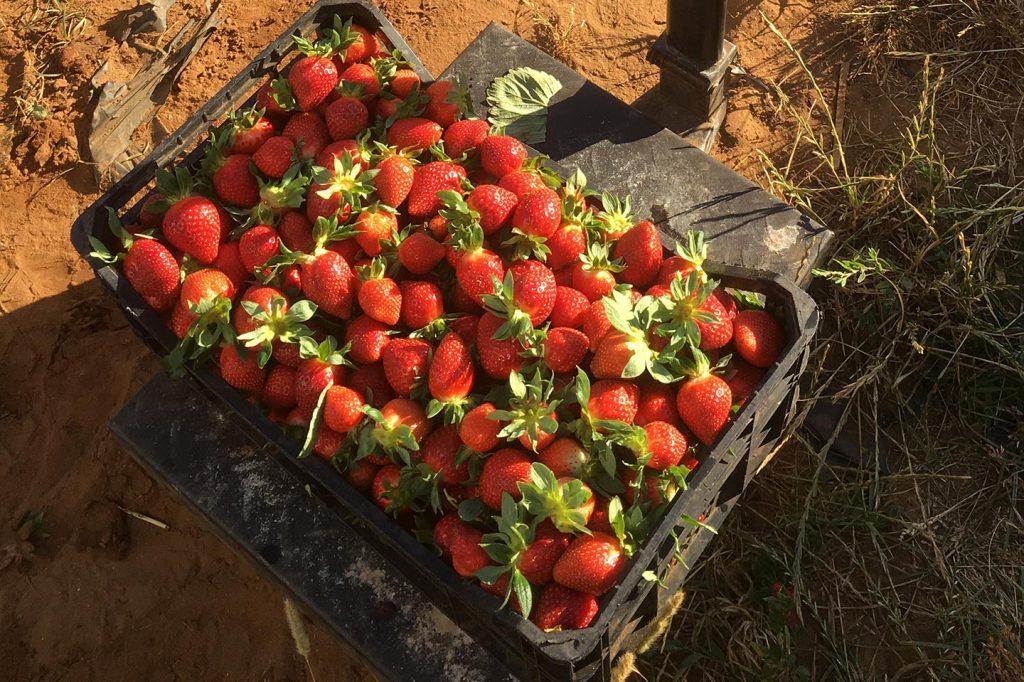Blockchain is never stronger than its weakest link
2019.12.16

The path to transparency using blockchain technology in the Moroccan strawberry supply chain has shown to be a long and winding one.
The path to transparency using blockchain technology in the Moroccan strawberry supply chain has shown to be a long and winding one, according to a fresh report from Axfoundation, Axfood and SIM. An investigating field trip led a decision not to move forward with the previously planned pilot in the harvesting season 2020. The project partners still believe blockchain has great potential, however, also see a lot of challenges related to realizing the potential of blockchain in the food chain. They hope that sharing lessons learned can help moving the industry forward.
Download the Blockchain in Morocco lessons learned report ![]()
Blockchain has for the past couple of years been on everyone’s lips in the food industry, says Hanna Skoog, Program director at Axfoundation. The technology has shown promising to radically simplify accessing reliable data on a product’s origin, production conditions and distribution along the supply chain, however there are also challenges.
The food chain is one of the most complex and fragmented supply chains in the world and many companies struggle with the opportunity to follow up and guarantee where and under what conditions a product has been produced. Since 2017, Axfoundation has run a project with sector-wide collaboration aiming to evaluate blockchain’s potential to provide practical solutions in the food industry. One of the three value chains that was scrutinized was strawberries from Morocco.
We wanted to know what a practical application of blockchain might look like and started an industry initiative to map blockchain’s capacity for increasing traceability and transparency at three supplier levels, one being verification of working conditions for female farm workers in Morocco.
The initial feasibility study and use cases led to an in-depth field study in Morocco which revealed several challenges in implementing blockchain in the international food supply chain. The main lesson learned being that before venturing in such a blockchain pilot, there needs to be trust between all the supply chain partners.
It is crucial that all actors have been fully identified on forehand and that there is a clear incentive to share data and participate. Our initial field visit shows that this was not the case. I see this as a human challenge and not a tech one, says Hanna Skoog.
Once factors such as trust and clear incentive is established, Hanna Skoog believes that step by step block-chain technology can underpin the established trust and processes and gradually more data can be shared.
A good start would be to start uploading third-party audit reports and quality related data to the blockchain, followed by more complex data such as additional evidence on working conditions and wages directly from the farms. Lastly, validation of the farm data can be done by workers.
Collecting data directly from farms and validating work environment and wages data directly by the workers themselves, is highlighted in the lessons learned report as the most interesting and ground-breaking path that needs to be tested.
It might be interesting to try this in another supply chain where vertical integration is already in place and trust has been established between the supply chain partners, says Hanna Skoog. Given mentioned circumstances, we believe blockchain has great potential and we see some promising use cases globally. But we also see a lot of challenges related to realizing the potential of blockchain in the food chain. Hopefully sharing learnings as ours can help us get forward.
Key lessons learned highlighted in the report:
- Dialogue between buyer, traders and farmers is crucial to on forehand establish trust and a clear incentive for all participant to take part of a blockchain pilot.
- For a blockchain project to be successful, the buying power needs to increase (higher volumes potentially by collaboration with existing buying groups) and a premium would need to be paid to the participating farmers.
- Value distribution should be investigated in the full supply chain.
Download the Blockchain in Morocco lessons learned report ![]()























